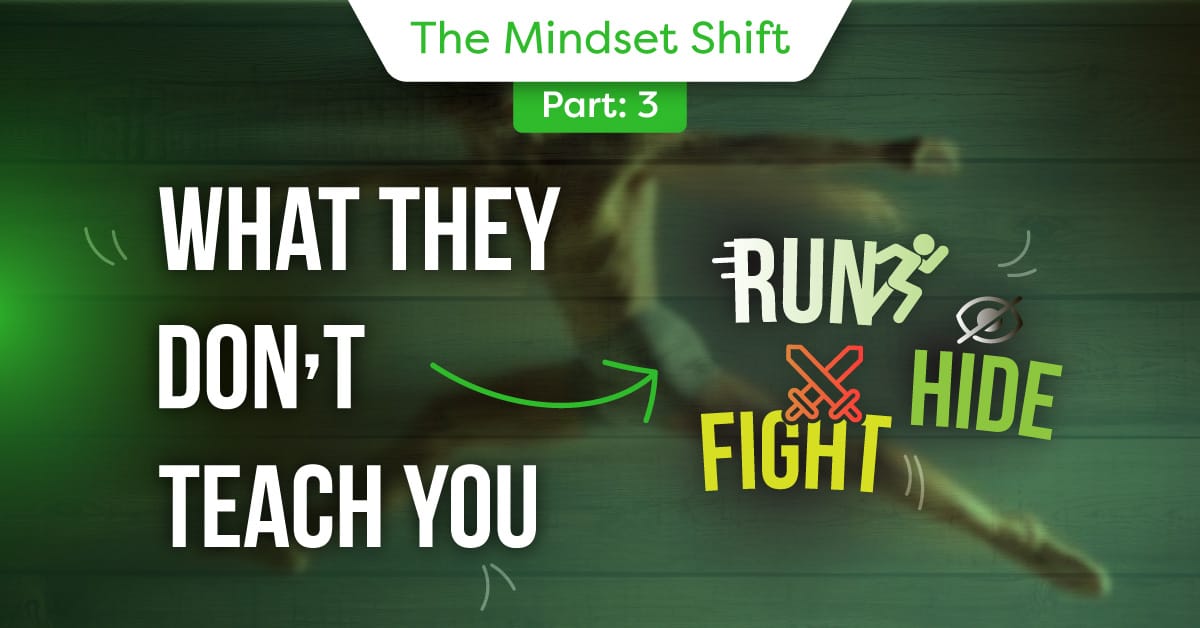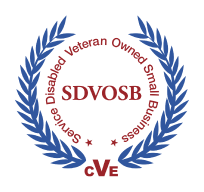Contributed by Jim Brigham, LCG VP of Risk Management, Former Operations Chief, State of Vermont, Office of Safety and Security
Series context. This installment builds on Part 1 (Participate in Your Own Rescue) and Part 2 (Time and Distance), which established that individuals own the first minutes of any crisis. Part 3 explains how to apply the Run, Hide, Fight model in real-world contexts and for practical decision-making.
The model works only when it is trained, understood, and applied with context.
The Run, Hide, Fight model is widely promoted in federal guidance and private-sector safety programs, yet most people have never practiced it under real stress. Posters, videos, and annual briefings create familiarity, but not capability. As Parts 1 and 2 emphasized, critical incidents often end before responders arrive, and survival depends on immediate civilian action within the first few minutes.
Federal guidance from the Department of Homeland Security (DHS), the Federal Emergency Management Agency (FEMA), and the Cybersecurity & Infrastructure Security Agency (CISA) reinforces the same principle. People survive when they move early, reduce exposure, and make rapid decisions that increase their time and distance from the threat.
LCG perspective. Run, Hide, Fight is not a sequence. It is a set of options you apply in the order the environment allows. The model works only when people understand how to run effectively, how to hide with intention, and when fighting becomes the only viable option. Training converts theory into reflex.
Run: The first and best option when it is possible
Running is not panic. It is a strategy. The goal is simple: create distance and break the line of sight before the threat can close the gap. Distance increases survivability in nearly every active-threat scenario documented in federal incident studies. That advantage is earned through planning, not luck.
What running actually requires
- Know three exit routes from every room you regularly occupy. Stairwells, ground-level egress points, and secondary doors matter more than the nearest exit sign.
- Avoid elevators. They can trap you or deliver you directly into the threat’s hands.
- Move decisively. Hesitation costs seconds, and seconds drive outcomes.
- Drop what slows you. Bags, laptops, or equipment can be retrieved later. Mobility is survival.
- Help only when it does not expose you to additional immediate risk. Quick verbal direction often helps more than physical assistance.
Movement under stress is complex without practice. Part 2 emphasized time and distance as currency.
LCG perspective. During threat assessments, we regularly observe workplaces where exits are blocked, poorly marked, or known only to maintenance staff. People who do not see the building cannot run effectively. Clear routes and regular walkthroughs solve that.
Hide: When escape is not possible, deny access, break the line of sight, and buy time.
Hiding is not simply crouching or turning off lights. It is a tactical effort to deny the threat access, obscure visibility, reduce sound, and create layers of protection. These layers matter because they slow an attacker, alert you to forced entry, and buy time for responders. Federal guidance stresses the role of concealment and cover in survivability.
Effective hiding requires four things.
- Barriers that delay. Use heavy furniture, door-stops, bags, or improvised wedges. Delay is valuable even if it lasts only seconds.
- Cover and concealment. Cover protects you. Concealment hides you. Good hiding locations combine both.
- Noise control. Silence phones and radios. Close blinds or interior glass. Small sounds carry farther than people expect in emergencies.
- Positioning with intent. Stay off the direct line of sight of the doorway, avoid fatal funnels, and identify a second move if the room becomes compromised.
The priority is to prevent the threat from entering. The second priority is to avoid detection. The third is to prepare for rapid movement if circumstances change.
LCG perspective. During assessments, we routinely find that employees do not know which doors lock, which doors do not, or whether interior windows can be covered. Hiding effectively requires familiarity with your actual environment, not abstract instructions.
Fight: The last resort when life is in immediate danger and no other options remain
Fighting is the least trained and most misunderstood component of the model. Federal guidance consistently frames fighting as a last resort when an individual faces immediate harm and no viable path to escape or concealment exists. The objective is not to subdue or defeat the attacker. The aim is to disrupt, disorient, and create an opportunity to escape.
What fighting actually means
- Use objects around you to create a momentary advantage. Chairs, fire extinguishers, bags, or tools can disrupt an attacker long enough to break contact.
- Act with commitment. Half-measures increase risk.
- Coordinate if multiple people are present. Numbers and surprise matter.
- Disengage as soon as there is an opportunity. Escape is the purpose.
Fighting carries physical and psychological risk. Training reduces hesitation and gives people a blueprint for action when they have no alternative.
LCG perspective. When we run scenario-based exercises, individuals often discover that their assumptions about what they would do under stress are incomplete. Structured, trauma-informed training helps people recognize the moment when running or hiding is no longer possible and prepares them for decisive action.
How to apply the model with context
Run, Hide, Fight is not a script. It is a decision process shaped by environment, proximity, and available information. People freeze when they believe there is only one correct answer. They move when they understand they have options and that the correct option changes as conditions evolve.
Practical rules for real environments
- If you can run safely, run.
- If you cannot run, hide with intention.
- If the threat breaches your immediate space, fight to create an escape route.
- Reassess constantly. Situations change quickly.
- Communicate clearly with the people around you using short directives.
This decision cycle aligns with the time-and-distance principles established in Part 2 and the response-gap facts presented in Part 1. The model works because it is flexible, simple, and adaptable to real human behavior under stress.
Quick checklist
- Know three exit routes for every space you use.
- Identify two places you can hide with layered protection.
- Practice short decision cycles: run if you can, hide if you must, fight only as a last resort.
Final thought
Run, Hide, Fight is not about heroics. It is about survival and responsibility. When danger unfolds faster than responders can arrive, your actions in the first seconds determine your options. Running increases distance. Hiding buys time. Fighting creates one last opportunity when everything else has failed.
The model works only when people learn, practice, and understand it in context. That is the mindset shift: own the decisions that you control, and prepare for the seconds that matter most.
References (endnotes)
[1] “Active Shooter – How to Respond,” U.S. Department of Homeland Security (DHS) booklet. Available at https://www.dhs.gov/xlibrary/assets/active_shooter_booklet.pdf.
[2] “Active Shooter and Terrorism,” U.S. Fire Administration (USFA) / FEMA. Available at https://www.usfa.fema.gov/a-z/active-shooter-terrorism.html.
[3] “Planning and Response to an Active Shooter,” Cybersecurity & Infrastructure Security Agency (CISA) / Interagency Security Committee. Available at https://www.cisa.gov/sites/default/files/publications/Planning%20and%20Response%20to%20an%20Active%20Shooter_2021.pdf.
[4] “Active Shooter Attack Prevention and Preparedness (ASAPP),” Federal Bureau of Investigation (FBI). Available at https://www.fbi.gov/how-we-can-help-you/active-shooter-safety-resources/active-shooter-attack-prevention-and-preparedness-asapp.
[5] “Mitigating Community Risks of Active Shooter Incidents Through Fire / EMS Response” research paper. Available at https://apps.usfa.fema.gov/pdf/efop/efo49581.pdf.
[6] “Active Shooter Preparedness Action Guide,” Cybersecurity & Infrastructure Security Agency (CISA). Available at https://www.cisa.gov/sites/default/files/2025-06/Active-Shooter-Preparedness-Action-Guide_508_20250611.pdf.
[7] “Active Shooter Guide (DHS)” resource. Available at https://mpdc.dc.gov/publication/active-shooter-guide-dhs.
[8] Internal LCG assessment findings on movement, barricades, and workplace readiness. (LCG internal document)
[9] Case examples and after-action insights from multi-agency reviews. (LCG internal research note)
This article is for general information and does not constitute legal or safety advice.







